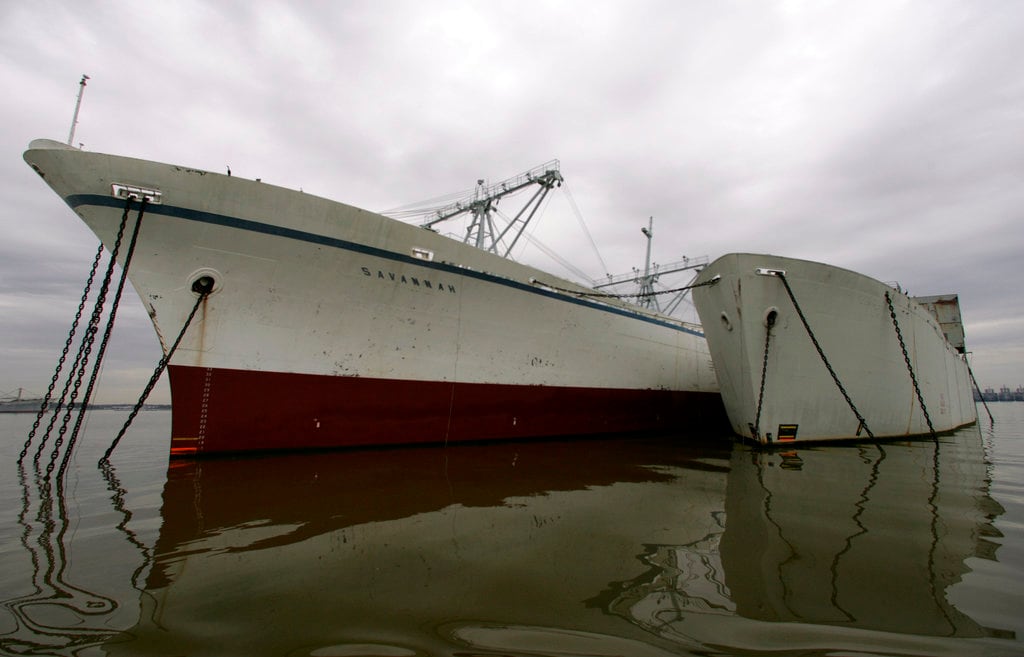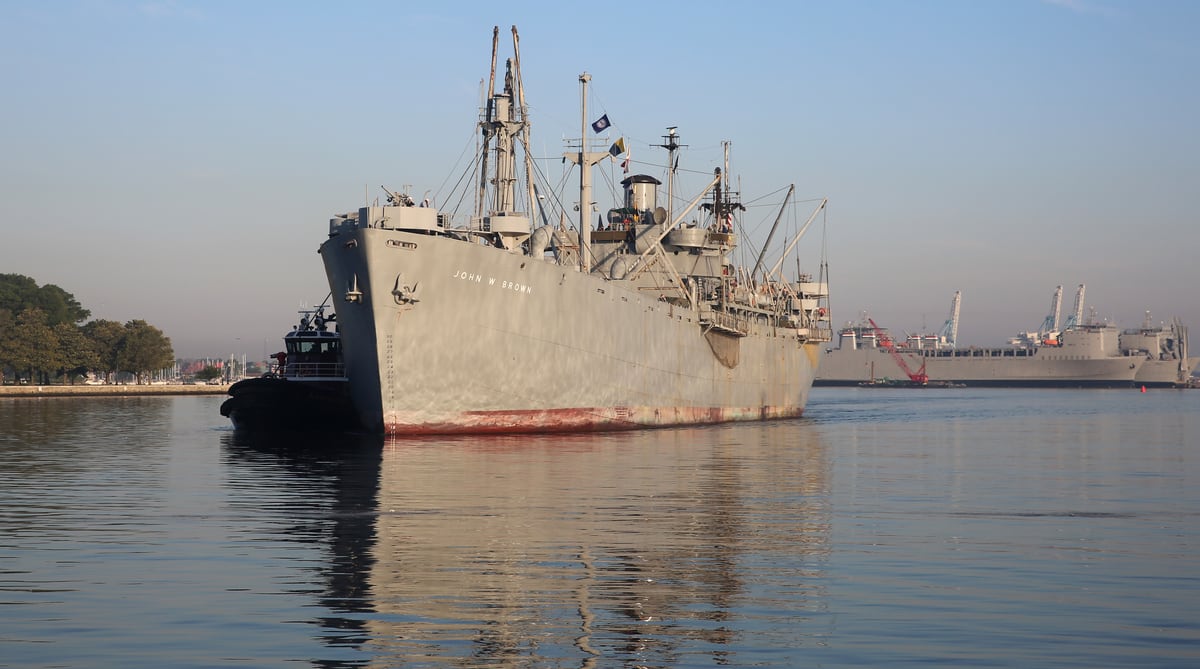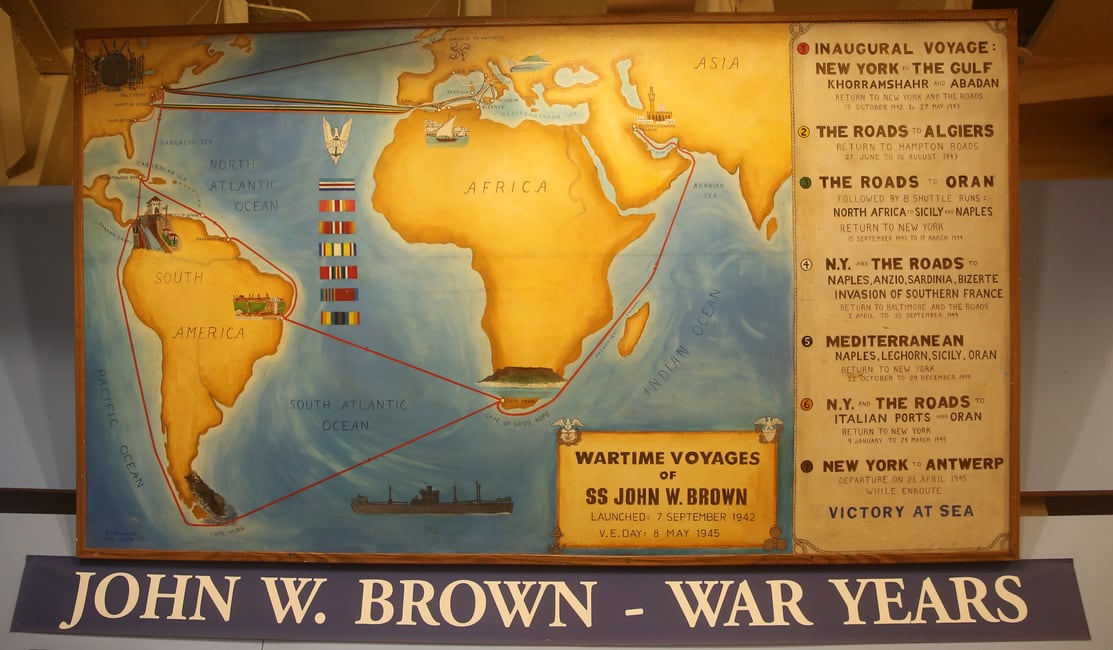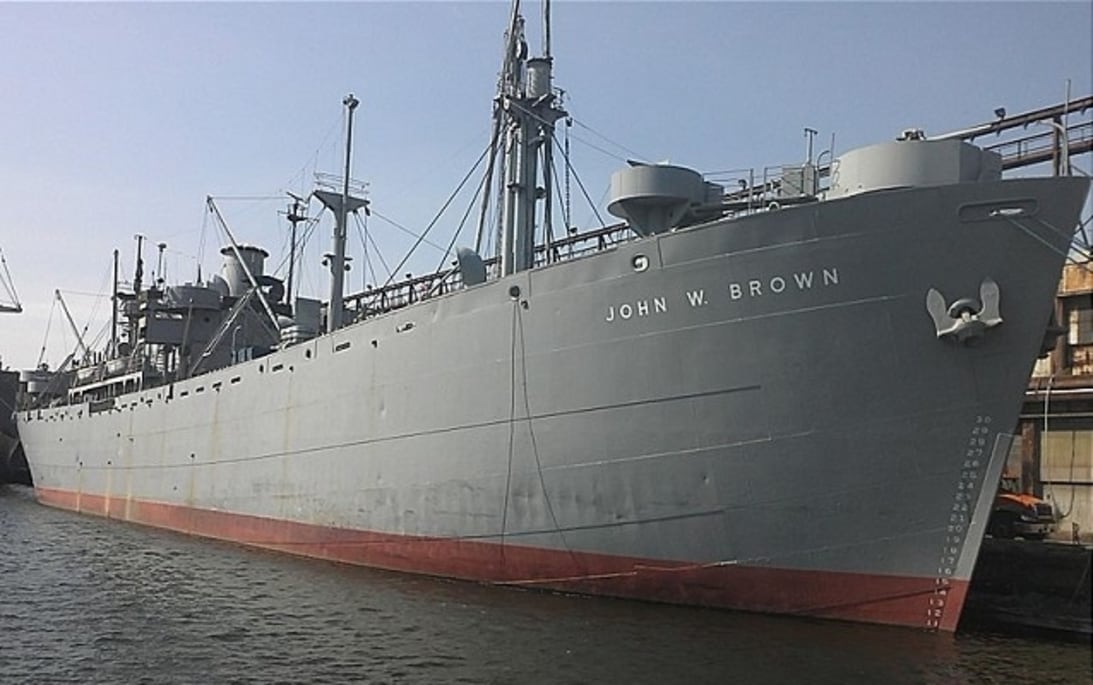BALTIMORE — Joe Colgan never considered Liberty ships, those workhorses of the American war effort during World War II, as his friends. Until he met the SS John W. Brown.
“The last Liberty ship I got off, I swore to God I would never get on another one,” the 93-year-old Navy Armed Guard veteran said from his home in Bel Air, recalling the day a friend suggested he visit the ship, at the time a new arrival in Baltimore.
Volunteers were working to make it seaworthy once again, with an eye toward creating a combination floating museum, classroom and training vessel. Half a century earlier, he’d disembarked from a Liberty ship in San Francisco, happy to leave the war behind.
But the friend was persistent and eventually got Colgan aboard. Another 20 members of the Armed Guard were also there, and he was hooked. "I went back, and the camaraderie started all over again," Colgan said.
He spent the next 30 years helping to keep the John W. Brown running.
But come September, the John W. Brown could be homeless.
The 440-foot-long gray vessel is one of only two fully operational Liberty ships, which transported vast numbers of military personnel and countless tons of cargo during the war — and the only one sailing regularly out of the port city where it was built. It’s berthed at Pier C in Canton, on property owned by Rukert Terminals Corp.
But a five-year agreement to provide a free home for the John W. Brown — which Rukert agreed to when it paid the state $2 million for the pier in 2014 — expires in September. The nonprofit volunteer group that restored and maintains the ship is looking for new digs.
"We've spent a good bit of time looking for a new, permanent home, but we haven't really had a whole lot of luck," says Richard Bauman, 65, a retired ship pilot for the state of Maryland who serves as captain and master of the John W. Brown. "They're not going to throw us out, but they run a business, and they would like to have us find a place where we can stay permanently."
RELATED

Officials with Project Liberty Ship say all parties are working to find a permanent home.
"We wish them well, and we told them we'll work with them," says Rukert CEO Norman Rukert Jr. "We're not going to say on Oct. 1 that they have to go."
Rukert declined to answer further questions.
But finding a permanent home won't be easy. Fewer than a dozen commercial piers in the area are large enough to handle the ship, said Michael Barnes, a member of the nonprofit's board.
The John W. Brown operates on a budget of about $1 million a year, Barnes said, almost all raised through donations and fees. Project Liberty Ship officials figure it would have cost about $15,000 a month to rent the Canton pier, and they're expecting to spend about that much, possibly more, for a new space. They're even willing to consider purchasing a pier, Barnes said.
"The bottom line is: We really don't expect anybody to give us a free pier," he said.
The Port Covington area includes multiple piers that would be large enough, but they are under lease to the federal government for the next five years, said Marc Weller, founding partner of Weller Development Co., lead developer of the Port Covington project. Other large piers at the site are in disrepair, Weller said.
"I'd be amenable to working with them for a long-term solution," Weller said. "It just comes down to the timing. . . . The fix of one of those other piers would be a couple of years out as well."
Weighing more than 7,000 tons and armed with 12 on-deck guns, the ship attracts tourists — some just want to see what it looks like, while others book passage on its occasional cruises down the Chesapeake Bay. Children, including some STEM students, and would-be mariners have gained their sea legs on the ship as well, in much the same way their grandparents and great-grandparents did during the war.

For men like Morton H. Weiner, who served in the Army Air Corps during World War II, a cruise on the ship brings back vivid memories.
"Being on the John W. Brown Liberty ship reminded me of being on the troop ship, the 'Morton,' returning back to the states after the war," Weiner, 95, wrote in an email from his home in Columbia. "The ship was headed for San Francisco, and I was on deck, and saw the Golden Gate Bridge, the sun was shining on the bridge, truly it was a 'golden' sight. I knew then that I would be able to call my girlfriend, Esther, when we docked . . . and the war was over, life could begin again. Today, we are married for 72 years."
Those sorts of memories come flooding back every day.
"It's living history," said Jo Ann Malpass, secretary of Project Liberty Ship. "This ship was built in Baltimore in 1942, when the shipyards were really booming. A lot of people have relatives who worked on these."
Construction of the ships began in September 1941. Initially, they were marked for sale to the British — the U.S. wouldn't enter the war until the attack on Pearl Harbor the following December. By war's end in 1945, more than 2,700 Liberty ships had been built.
In all, two-thirds of the cargo that left the U.S. during the war was transported on Liberty ships. The John W. Brown could carry as much as 9,000 tons of cargo and as many as 500 soldiers.
"The bottom line is, they were the logistics support that made it possible for the United States to help the Allies win the Second World War," said Bauman. "Plus, they are important as a monument to American industry. There are dozens and dozens of companies that contributed to building the Liberty ships."

The John W. Brown, named for an American labor-union leader, was built in 41 days and launched from Baltimore’s Bethlehem-Fairfield Shipyard on Sept. 7, 1942 — one of 384 Liberty ships built here. After making 13 trips during the war, it was loaned in 1946 to New York City. There, it served as a maritime high school until 1982.
After floating dormant in New York and, later, Norfolk, the ship found a home, and the people to care for it, in Baltimore. It arrived here in August 1988 and following extensive renovations, almost all accomplished with volunteer labor, was back to sailing under its own power in August 1991.
The ship moved last week from Canton's Pier 1, where it had been berthed for much of the past 30 years, to the nearby Pier C. Pier C is currently a secured pier, meaning public access is limited. John Brown officials say they are working with Rukert to ensure the public can continue visiting the ship regularly.
For most of its years here, the John W. Brown has offered trips down the Chesapeake, usually to the bay bridge and back — 110 such cruises since 1991. Staffed with actual crew as well as actors portraying military personnel and others — the Andrews Sisters, comedians Abbott and Costello, President Franklin D. Roosevelt and Gen. Douglas MacArthur — the hours-long journeys do their best to evoke the war years.
Plenty of visitors have connections to the ship, says Bauman. "There's this welder who, last time I saw him this summer, he's 101 years old and worked in the Bethlehem Steel shipyards. One guy from Australia, he saw it while driving on I-95, he stopped and said he grew up near where a Liberty ship had been wrecked. He came back the next year for a cruise."
Bauman is confident about finding a solution. Good luck, he says, has followed the John W. Brown, from surviving the war to finding a home here in Baltimore to finding enough volunteers to make it seaworthy once again.
“We took a 50-year-old ship that had been laid up for 30 years, and now it’s been running for 28 years,” he says. “It’s actually kind of written into the DNA of Project Liberty Ship that you have to be optimistic.”




